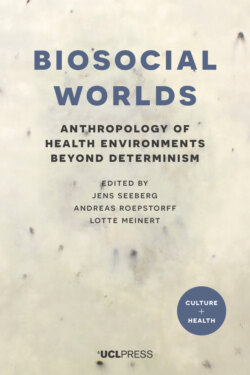Читать книгу Biosocial Worlds - Группа авторов - Страница 31
На сайте Литреса книга снята с продажи.
Conclusions
ОглавлениеThe concept of ‘environment’ has taken centre stage in the era of the Anthropocene. It is recognised that genes rarely determine who we are, as was formerly believed to be the case but, rather, that the human genome ceaselessly responds to environmental stimuli that impinge on it, with a lifelong influence on individual development, health and wellbeing. This recognition is designated as the post-genomic era, and the molecular mechanisms that facilitate interactions among environments external and internal to the human body are steadily being elucidated in the burgeoning field of epigenetics. These molecular insights are of enormous significance, but the majority of epigeneticists, although they acknowledge the contributory effects of environment writ large on human bodies, nevertheless deliberately miniaturise the environment and delineate the target of investigation as proximal and/or internal to the body. This practice of scaling down the environment has been described by social scientists as neo-reductionistic.
The illustrative examples set out above make clear how social, political and economic variables impinge on the lived experience of individuals, families and communities, with profound effects on the incidence and distribution of health and illness. The effects of social isolation, extreme unremitting poverty and forced migration have particularly devastating effects on wellbeing, often with lasting intergenerational effects. The findings set out above suggest that investigative collaborations of epigeneticists working with social scientists, epidemiologists, public health researchers and historians could be very fruitful. In recent years, certain epidemiologists have entered into such collaborations (see, for example, Relton and Davey Smith 2012), and anthropologists are also becoming involved in both the design of research projects and the collection of data (Roberts 2016). The most effective of these projects are those in which ‘environment’ is explicitly delineated or contoured for the purposes of any given investigation, with full awareness that doing so is a device, with unavoidable limitations. Deductive thinking is not abandoned, but is greatly supplemented by attention given to interrelated, overlapping orbits that contain dense webs of partial knowledge, on the basis of which interpretive accounts can be readily discerned and explicated.
Notes
1. https://www.benefits.va.gov/compensation/claims-special-birth_defects.asp.
2. Marasmus and kwashiorkor are two common forms of serious protein-energy malnutrition.
